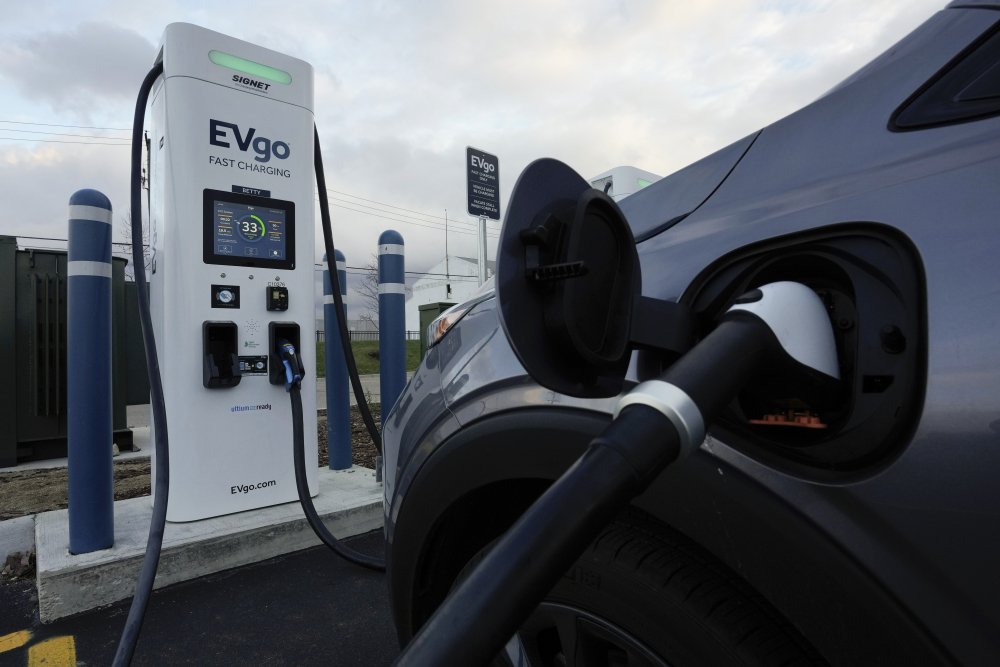Fourteen years ago, my first electric vehicle had a summer range of 85 miles that dropped to 55 in winter, and public charging stations were rare as zebras in Maine. It’s true that back in 2010, first-generation EV technology was not practical for most folks. Much has changed since.
Today my five-passenger EV goes 320-plus miles in summer and roughly 280 miles in winter. Mostly I charge at home for local driving. When I need to travel longer distances, Maine now has 474 public charging locations. Plus, Maine is in the process of deploying millions of dollars in federal funding to rapidly expand our public charging network.
Based on the high volume of negative comments about EVs in this newspaper, it seems that most folks don’t realize that EV technology has evolved to the point where it’s much better than gas power.
In general, electric vehicles cost less than half what it costs to own and operate a similar internal combustion engine vehicle. Electric motors have fewer than 50 moving parts compared to 2,000-plus in a gas-powered car, resulting in higher reliability and lower maintenance costs for EVs. If you charge your EV with utility power, the cost per mile is half the cost of gas per mile, and air pollution drops by about 50% because an electric motor is vastly more efficient than an internal combustion engine. If you charge your EV with solar electricity, the cost per mile driven drops to zero (once the solar array is paid off) and pollution drops to zero.
What about the EV battery? It’s true that rare-earth metals in today’s EV batteries are mined in some of the poorest nations by desperate and grossly underpaid adults and children (ditto for the batteries in our laptops, phones and many other electronics). The Inflation Reduction Act is already solving this problem by incentivizing U.S. mining companies and battery and EV manufacturers to only use domestically sourced rare-earth metals.
Performance-wise, electric vehicles are shockingly better than gas cars because EVs accelerate more smoothly and more quickly, they are silent and they can provide both transportation and backup power for your home, job site, campsite or tailgate party.
My Ford F-150 Lightning has eight 120-volt electric outlets and one 240-volt outlet that can power any appliance. Also, my home charging station is bi-directional, meaning that electricity stored in the vehicle battery can be fed into my home during grid outages to keep the power on.
After driving the Lightning for the past 16 months, I now know for certain that electric trucks are better than gas-powered trucks. Growing up in Maine and working at various times as a lobsterman, worm-digger and roofer, I drove gas-powered pickup trucks for decades. For anyone still clinging to the notion that EVs aren’t ready for prime time, I urge you to get to your nearest dealer and take a test drive; see for yourself what the latest and greatest technology is like.
Then, after you’ve driven a modern electric vehicle, consider whether it makes sense for Maine to adopt the “Advanced Clean Cars II” rule, which would require auto manufacturers to send more electric vehicles to Maine dealers. This rule will not “mandate” Mainers to buy an EV. The goal of the rule is to ensure Mainers have plenty of EV models to choose from, not to force Mainers to buy. This is an important distinction that has been lost in the false hysteria about people being forced to buy something they might not want.
Once people realize how good today’s EVs have become, and as the public charging infrastructure continues to rapidly expand, electric vehicles will soon become a no-brainer for all Mainers.
Related Stories

[ad_2]
Source link





Invalid username/password.
Please check your email to confirm and complete your registration.
Use the form below to reset your password. When you’ve submitted your account email, we will send an email with a reset code.